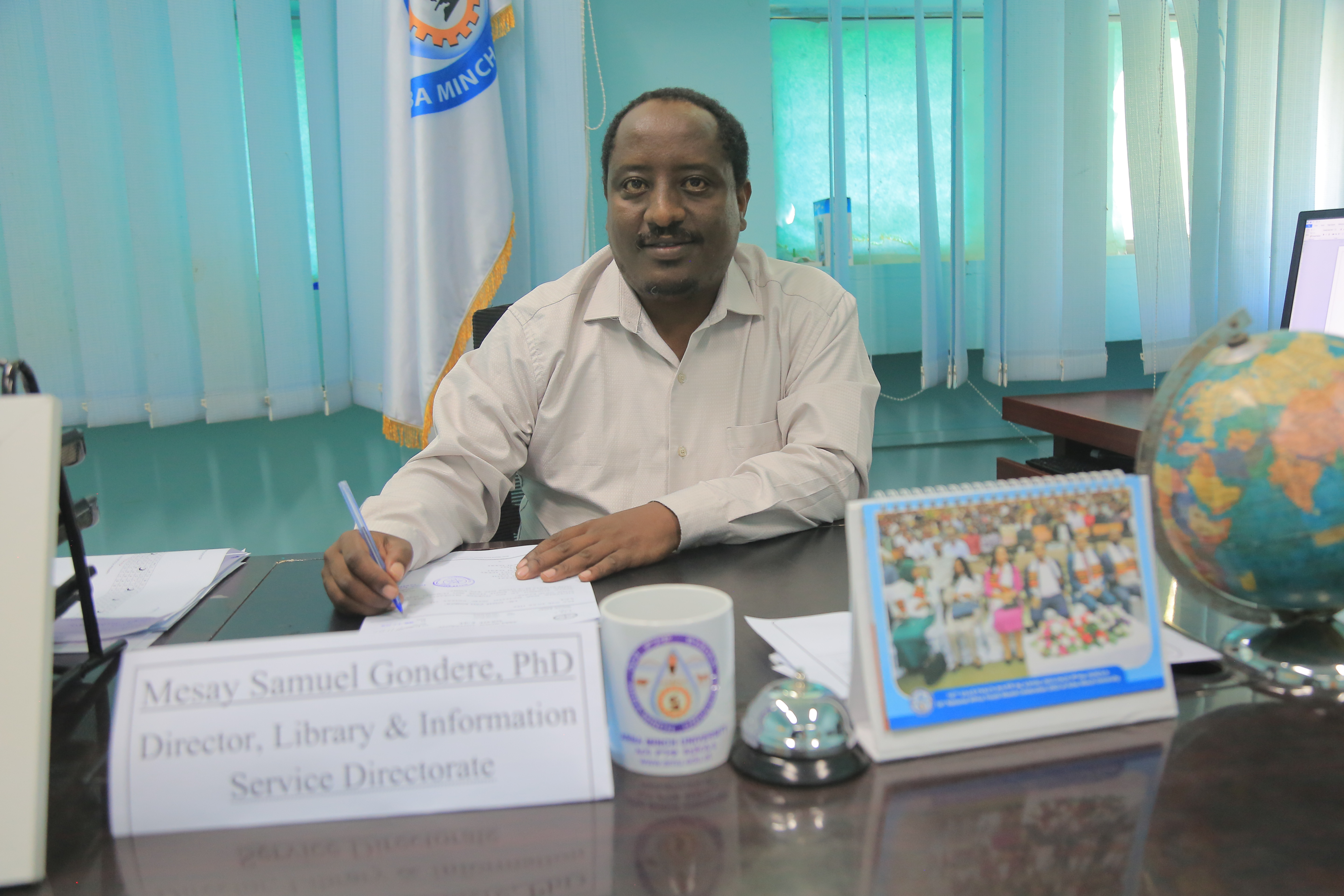The Arba Minch University library as an academic and information center, ever since it was established in 1986 have shown a continuous progress and change along with the parent institution.
The library is developing its services and by opening up new divisions with appropriate facilities these are:-
- Technology Institute library at Main campus /established in 1986 / and Capacity of seat 980
- Post Graduate Library at Main campus /established in 1987/ and Capacity of Seat 360
- Applied and Education Library at Main campus /established in 1990/ and Capacity of seat 1000
- Health /Medicine Science and Agricultural development college Library at Nechsare Campus /established in 2003/ and Capacity of seat 380
- Natural Science College Library at Abaya campus /established in 2003/ and Capacity of seat 1000
- Social Science & Humanities & FBE Library (established in 2003) at Chamo campus and Capacity of seat 940
- Totally all branch libraries seat of capacity 4660.
The Library has the basic responsibility of providing the collection resources and services to the students, faculties and staffs of AMU University Community. In line with the mission statement of the university in which the library is an integral part and as an intellectual resource of the academic community the following are the vision, mission, goals and objectives of the Library.
Vision
As a center of intense intellectual inquiry the university of AMU library shares with the University of AMU the aspiration to be the most dynamic rearing environment in Ethiopia.
Mission
As AMU Library utilize its human resources technology and Physical facilities to provide responsive library services and collection aligned with the education; research and outreach activities of the students, faculties and staffs of AMU University.
The mission of the University Library to support the various colleges and curricular programs of the University by:-
- Acquiring and preserving records of human knowledge and creativity in both print and non-print Materials. Such as those in monographs, digital, audiovisual, online and other appropriate formats.
- Providing access to these records by organizing, cataloging and indexing them.
- Assisting and instructing users of the Library through orientations, formal lectures or one-on-one interaction in order to help them in the retrieval of these records and those held by other libraries and databases throughout the world.
- Providing maximum, effective and fast retrieval of information through the computerization of the library services and operations
- Committing itself with other institutions and organizations in the sharing of these resources with a community of researchers and scholars.
Objectives
Focuses on enhancement and change and based on a continued commitment to the high quality reference service access to materials and technology that our users have come to expect.
- To develop and enhance the capability of the library resources and services in meeting the demands of the curricular, instructional, and research programs of the academic community by providing regular funding to yearly acquisition of library materials
- To establish a computer infrastructure of all library operations and services by acquiring library computer software and hardware to make computerization functional
- To establish a strong library linkage with other institutions and agencies in the country and organizations and agencies from foreign countries by seeking contact with these agencies
- To strengthen the library's bond to the library patrons by establishing "Friends of the Library" program which would assist in the development of the library collection
- To provide services that enhance the quest for knowledge and intellectual activity
- To create various bibliographies and library pathfinders for easy access and retrieval of information
- To create an atmosphere where in students and faculty may carry on the learning process
On going Programs
- Acquisitions (ordering, receiving, and invoicing materials)
- Cataloging (classifying and indexing materials)
- Circulation (lending materials to patrons and receiving them back)
- Serials (tracking magazine and newspaper holdings)
- The OPAC (public interface for users)
- Simple, clear interface for librarians and members (patrons)
- Union catalog facility
- Customizable search
- Circulation and borrower management
- Full acquisitions system including budgets and pricing information (including supplier and A currency conversion)
- Serials system for magazines or newspapers
- To support the curricular programs of the university by:-
- Acquiring and preserving records of human knowledge and creativity in both print and non-print Materials. such as those in monographs, digital, audiovisual, online and other appropriate formats;
- Providing access to these records by organizing, cataloging and indexing them;
- Assisting and instructing users of the Library through orientations, formal lectures or one-on-one interaction in order to help them in the retrieval of these records and those held by other libraries and databases throughout the world;
- Providing maximum, effective and fast retrieval of information through the computerization of the library services and operations;
- Committing itself with other institutions and organizations in the sharing of these resources with a community of researchers and scholars.
- Giving e-resource services to the users. /INASP/ www..inasp.info and others online web based system.
- Future plan of the library
Library Directorate
Director:- Mesay Samuel Gondere, (PhD)
Email:- This email address is being protected from spambots. You need JavaScript enabled to view it.
Phone:- +251964955488
Contact Us
Library and Information Services Center
P.O. Box 21
Arba Minch University
Tel: +251-46881-2248
Fax: +251-46881-0820/0279
E-mail:
